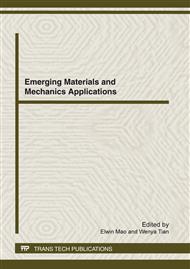p.166
p.171
p.176
p.181
p.186
p.192
p.198
p.203
p.208
The Study of Submerged Arc Welding Power Based on DSP
Abstract:
The main and control circuit of submerged arc welding (SAW) power, which is mode of full-bridge and IGBT, is designed based on DSP (Digital Signal Processor). The designing include sub-modules based on DSP such as the sampling signal circuit, the control circuit for external characteristics, the PWM (Pulse-Width -Modulation) control circuit of SAW power, the IGBT drive circuit and etc. This designing can strengthen the reliability of feedback regulation property on SAW power, can enhance the stability of the parameters from the power system. The experimental result shows that the designed welding power has good feedback regulation and stability properties during the SAW process.
Info:
Periodical:
Pages:
186-191
Citation:
Online since:
March 2012
Authors:
Price:
Сopyright:
© 2012 Trans Tech Publications Ltd. All Rights Reserved
Share:
Citation:


